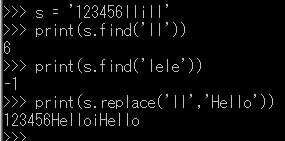标签:strong 查找 awk 保留 小数点 bar img span blog
今日任务(10月20日)
掌握知识点:
1. 学习python的整型
2. 学习python的浮点型
3. 学习python的布尔型
4. 学习python的字符串和常用方法
对应猿课章节 4.1-4.4
Python有五个标准的数据类型:
1.整型(Int)
Int,整数,范围为 -2 ** 31 到 2 ** 31 - 1 ,超出这个范围便是长整型,有2进制,8进制,10进制,16进制。用8进制表示整数时,前面要加‘0‘的前缀,16进制的前缀为‘0x‘
>>> 017 #8进制 15 >>> 0xF #16进制 15
长整型(Long)
Long,整数,超出范围为为 -2 ** 31 到 2 ** 31 - 1的数字。后缀为‘L‘。其他同【整型】
2.浮点型(Float)
Float,小数,位数是可以变的,如:12.1 / (10 ** 8) 和 1.21 / (10 ** 7) 相等。对于很小或很大的数可以用科学计数法,如:1.21e-09。整型的除法是精确的,而浮点型的除法有可能是四舍五入的。
a.round()内置方法
用round()内置的方法来取小数点的精度是最常用的。
当round(float)只包含数字的时候,默认保留1位小数,采取四舍五入的方式。例子如下:

b.使用格式化
使用格式化去小数精度的额时候,规则和round是一样的,小数点最后一位都是取舍到偶数,例子如下:

round(float,精度)
先进行四舍五入的运算,如果小数点精度的最后一位是偶数,符合条件,如果小数点精度的最后一位四舍五入完以后为奇数,则舍弃原小数点精度以后的所有数字,及保证(小数点的最后一位必须为偶数)。
3.字符串(String)
String,用单引号或双引号或三引号的括起来的数据。引号不做字符串,只代表一种符号。如:‘abc‘,‘hello world‘,"I‘m mouMiFan"。如果字符串中包含‘或",则用【\】转义,字符串中的【\】本身也要转义。
\r:回车,\t:制表符,\n:换行符
三引号括起来的字符串可以跨多行。
>>> string = "string" >>> print string string >>> string = ‘string‘ >>> print string string >>> string = ‘I\‘m string‘ >>> print string I‘m string >>> print ‘this is \n , haha‘ this is , haha >>> ‘‘‘this is hello world‘‘‘ ‘this\nis\nhello\nworld‘ >>> print ‘‘‘this is hello world‘‘‘ this is hello world
字符串常用的方法:
字符串默认是有下标的,默认从0开始。
find, 查找字符串.如果找到返回字符串首字母匹配的下标信息,如果不匹配,返回-1

replace

split

##shell里面的awk的-F的选项
Join
format
strip
字符串的注释
c.布尔型
布尔值和布尔代数的表示完全一致,一个布尔值只有True、False两种值,要么是True,要么是False,在Python中,可以直接用True、False表示布尔值(请注意大小写),也可以通过布尔运算计算出来:
>>> True
True
>>> False
False
>>> 3 > 2
True
>>> 3 > 5
False
布尔值可以用and、or和not运算。
and运算是与运算,只有所有都为True,and运算结果才是True:
>>> True and True
True
>>> True and False
False
>>> False and False
False
or运算是或运算,只要其中有一个为True,or运算结果就是True:
>>> True or True
True
>>> True or False
True
>>> False or False
False
not运算是非运算,它是一个单目运算符,把True变成False,False变成True:
>>> not True
False
>>> not False
True
布尔值经常用在条件判断中,比如:
if age >= 18:
print ‘adult‘
else:
print ‘teenager‘d.字符串
标签:strong 查找 awk 保留 小数点 bar img span blog
原文地址:http://www.cnblogs.com/llill/p/7697515.html